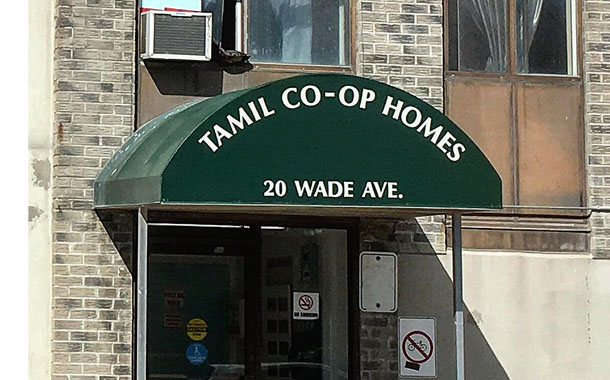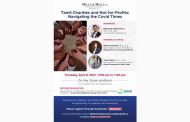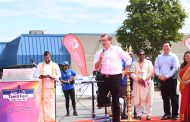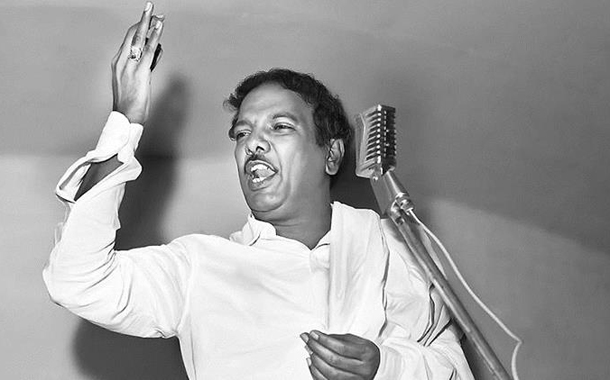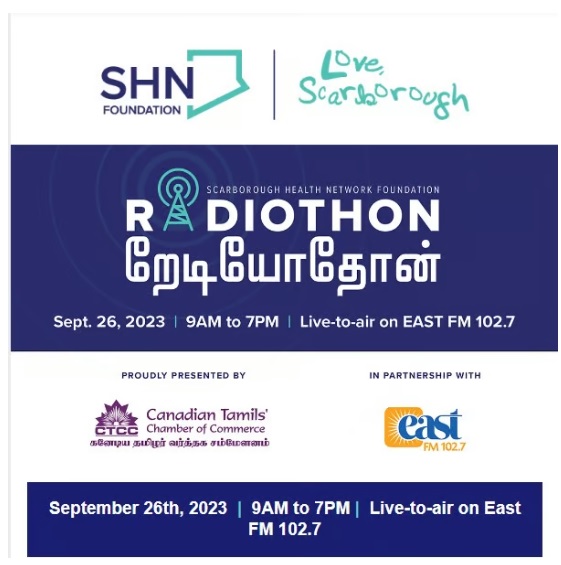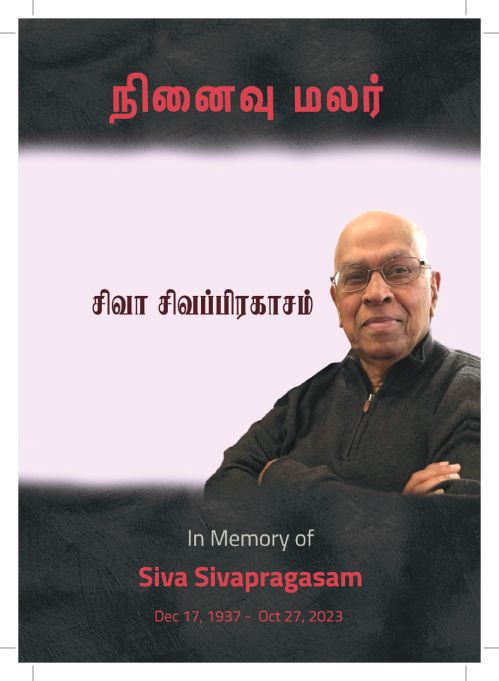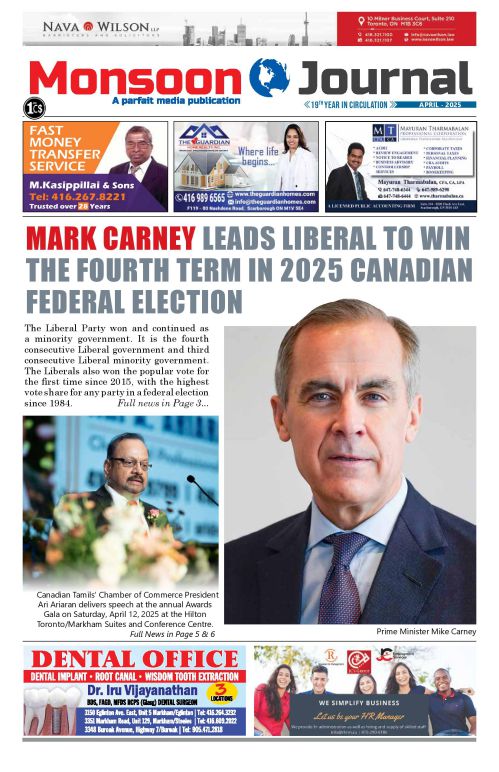Richmond Hill?? Ganesha?? Temple???? Sri Vaishnava Guru/Philosopher Swami Vedanta Desika
Compiled by?? : Kidambi Raj
Swami Vedanta Desika (1268-1369)??????
This year is his 750th birth anniversary. It so happened that his actual Thrunakshatram, Thiruvonam in the Tamil month of Purattasi coincided with the first day of this year???s 3-day Azhwar festival, Friday, September 21st.
He was born in Thoopul near Kancheepuram in Tamil Nadu, India, to a pious couple named Ananta Suri and Thothaaramba about 130 years after Bhagavad Ramanuja attained paramapadam. Vedanta Devika???s parents were childless for a long time and one day Lord Venkateswara of Thirupathi ordered them to go for a pilgrimage to Thiruppathi. In those days there were neither buses nor trains and so they walked from Kancheepuram to Thiruppathi and climbed the Hills and had the darshan of the Lord. That night Lord Venkateswara appeared in their dream as a small Vaishnava boy and gave Smt. Thothaaramba a golden bell and she swallowed the bell in the dream. Next day the?????? archakas did not find the bell in the perumal sannidhi and they were worried and started searching for it. Perumal told in a heavenly voice that the bell has been given to Smt. Thothaaramba and she will deliver a son who will be a great scholar like Bhaghavad Ramanuja, who will firmly establish the supremacy of our srivaishanava sampradayam. To remind us this incident, even today there is no bell in the Perumal sannidhi. Only the huge bell suspended in the front hall is used while doing the thiruvaradanam. So, he is rightly considered to be an avatar of the divine bell of Lord Venkateswara of Thirumalai by the Vadakalai sect of Sri Vaishnavites. He was given the name Venkatanatha by his maternal uncle and teacher Kidambi Appullar.

Childhood days:
When he was about 5 years old, his uncle, Kidambi Appullar took him to Sri Varadarajar temple in Kancheepuram, a vaishnavite scholar, Sri Nadadhur Ammal was giving a lecture on Sri Ramanuja???s Sri Bhashyam. As soon as the scholar saw Sri Desikar he saw the divine radiance on him. Desikar and his uncle prostrated to the scholar and in term he stopped his lecture briefly and blessed them. When Desikar and his uncle were about to leave the scholar wanted to resume his lecture and forgot where he left before blessing the young boy. To everyone???s astonishment including the scholar, Desikar reminded him where he had stopped his lecture. Sri Ammal was deeply impressed and blessed him and predicted that Venkatanatha would become the main torch bearer of Sri Vaishnavism.
When Desikar turned 7, his uncle Sri Appullar took him under his wings and taught him arts, sciences and scriptures.
Adult days:
By the age of 20, Desikar became famous for his mastery over poetry, logic, linguistics, sciences, Vedanta, debate and allied arts. When he was 21, he married a beautiful girl, Smt. Thirumangai.?? Though Desikar was multi-faceted and famous, he lived a very humble and simple life with the support of his wife. He took a vow called uchhavritti, whereby he depended wholly on the Supreme Lord for his household needs by accepting grains and vegetables donated by disciples voluntarily, without actively seeking them.
Swami Desikar has lived in several cities through his life, such as Thiruvaheendrapuram, Kancheepuram, Srirangam and Melkote. Besides these places he has travelled widely all over India on foot. At each place, he composed many different works in languages such as Tamil, Sanskrit, Prakrit and Manipravala (a mixture of Tamil and Sanskrit) that revealed in ingenuity, creativity, logic, linguistic expertise, devotional fervor and erudite scholarship.
In 1317, Sri Varadaraja Perumal of Kancheepuram blessed Swami Desika and his wife Smt. Thirumangai with a boy, who was named appropriately as Varadhacharya. His birth star was Rohini, the same as that of Lord Krishna. Sri Varadhacharya followed the footsteps of his father Swami Desika and shined as his father.
??
??
Swami Desika at Thiruvaheendrapuram:
After the death of his maternal uncle, Sri Appular, Swami Desika wanted to chant the Garuda Mantra taught to him for many days without food and sleep to receive the blessings of the divine bird, Garuda on which Sriman Narayana travels. It is said in the scriptures that the divine bird Garduda is a Veda Swaroopi (incarnation of Veda). Desika went to Thiruvaheendrapuram and climbed the small hill and started chanting the Garuda mantra. Garuda was so pleased with the devotion of Desika, he blessed him with Hayagriva Mantra and instructed him to chant that mantra continuously to receive the blessings of Lord Hayagriva. Then Lord Hayagriva appeared before Desika and blessed him with the nectar flowing from His mouth. Lord Hayagriva took the seat of Swami Desika???s tip of the tongue as prayed by Desika. Lord Hayagriva gave an idol of Himself for Desika???s daily worship. This vigraha is still being preserved in the Devanatha temple in Thiruvaheendrapuram. Swami Desika composed famous Hayagriva Stotram, Devanayaka Panchashat in Sanskrit and Achutha Shatakam in Prakrit and Mummanikkovai and Nava Mani Malai in Tamil.
Swami Desika at Kancheepuram:
After visiting Diya Desams Swami Desika went back to Kancheepuram and while there composed several stotras explaining the concept of prapatti or surrender. The stotras are: Nyasa Vimshati, Nyasa Dashakam and Nyasa Tilakam in Sanskrit and Adaikkalapaththu and Artha Panchakam in Tamil.
Swami Desika at Thiruppathi:
Swami Desika when he went to Thiruppathi he composed the beautiful stotra called Daya Shatakam. Lord Srinivasa has blessed Swami Desika conferring the title Vedantaacharya.
Swami Desika at Srirangam:
All the Srivaishnava Acharyas have a special love to Lord Ranganatha of Srirangam. Bhagavad Ramanuja stayed there for a long time. Swami Desika was asked to come to Srirangam by other acharyas, for a debate to prove the correctness of our sampradayam which is strictly in accordance with the scriptures. Swami Desika on his way to Srirangam, stopped at Sri Perampudhur, the birth place of Bhagavad Ramanuja and composed a stotra on Sri Ramanuja to seek his blessings?? to win in the debate. This slokam is called Yatiraja Sapatati which glorifies all our acharyas and Sri Ramanuja in particular. The debate with the scholars of other sampradayams went on for seven days and in the end, Swami Desika demolished every argument of the opponents. The scholars who have debated with Sri Desika have accepted the defeat and became his disciples. This discussion has been compiled as Satha Dhudhani.
While there, he composed the famous Bhagavad dyana sopanam, glorifying the beauty of Sri Ranganatha from the feet to the head. This stotra is like Amalanadhi piran of Thiruppanaazhwar.
Swami Desika at Melkote in Karnataka:
In 1327, Srirangam was invaded by Muslims. They came to Srirangam to rob the temple and kill the satvik devotees. Fear gripped in the minds of everyone and they were afraid and didn???t know how to preserve the glory of the temple. It was decided that Swami Desika will travel to Karnataka along with the manuscripts of Sri Bhashya commentary along with the sons of Sri Sudharshana Bhattar, a great acharya who wrote the commentary for Sri Bhashya. Other acharyas left for Thiruppathi with the idol Sri Ranganatha. The temple was closed and many bhagavathas were brutally killed by the muslim invaders and even Swami Desika had to hide among the corpses for one night before travelling to Karnataka.
While in Karnataka, he composed a stotra called Abhithi Sthava praying to Lord Ranganatha to restore the glory of Srirangam.
Swami Desika in Srivilliputtur:
He went on a pilgrimage to south and visited many divya desams in Kerala and Madurai. While in Srivilliputtur, he composed the famous Godha Sthuthi. He had a special bhakthi to Aandaal and this stotram glorifies Aandaal. She has commended that this stotra should be recited during her utsavam along with divya prabandham.
Accolades for Swami Desika:
It is recorded in Sri Vaishnava books how Goddess Lakshmi, also known as Ranganayaki in the holy place, Srirangam, personally conferred him the title of Sarva-tantra-svatantra or master of all arts and crafts. It is also believed that Lord Ranganatha, the presiding Deity of Srirangam was so pleased?? with the performance of Swami Desika against all the other acharyas and commended that the Thaniyan glorifying Swami Desika Ramanuja daya patram should be recited every day in the temples before starting the Prabandaham recitation. Lord Ranganatha also conferred on Swami Desika the title Vedanta Desika, meaning, the supreme teacher of the conclusion of all knowledge. This was done because Lord Ranganatha was immensely pleased when Desika debated with differing scholars, and established the supremacy of the path of loving surrender or prapatti-marga.
He was awarded the titles such as Kavitarkika-kesari and kavitarkika-simham, the lion amongst poets; and Ramanuja-daya-patram, the recipient of Ramanuja???s causeless mercy, given in laudatory verse composed by the famous Brahma Tantra Svatantra Swami.
Swami Desika???s works:
- 28 Devotional poems in Sanskrit such as Hayagriva stotram, Gopala vimshati etc.
- 24 Devotional poems and treaties in Tamil such as Gitartha sangraham etc.
- 11 Philosophical treaties such as Shata dushani, Mimamsa paduka and Tattva-mukta-kalapam
- 10 Commentaries on the works of previous acharyas such as Stotra-ratna-bhashya, Chatu-shloki bhashya and Tatparya-chandrika
- 5 Narrative poems such as magnum-opus, the Paduka-sahasram etc.
- 32 Esoteric texts revealing the hidden meanings of Prapatti-marga such as Srimad Rahasya-trya-saram, Paramapada-sopanam, Amrita-ranjani and Amrita-svadhini
- 1 Drama named Sankalpa-suryodayam
- 13 Works on arts and sciences such as Bhugola-nirnayam and Silpartha-saram
- 4 Works that codified religious rites and practices such as Sri-vaishnava-dinasari and Bhagavad-aradhana-vidhi
Swami Desika???s last days:
Swami Desika lived for 101 yearsand felt that the time had come for him to go to the spiritual abode of Sriman Narayana. He went to Sri Ranganatha of Srirangam and took his permission. His disciples and his son were feeling the pain of separation and cried. Swami Desika consoled them and instructed them to continue their divine works and follow the Ramanuja Dharshanam. Finally in the year 1369 being satisfied with his work on earth, Swami Desika cast his tabernacle of flesh, praying to Udaiyavar (Sri Ramanujacharya) and Kidambi Appullar by placing their Padukas on his head. With Swami???s head kept on the lap of his son, Sri Kumara Varadhachariar and his Lotus feet on the lap of Brahma Tantra Svantrarar (Sri Periya Parakala Jeeyar of Sri Parakala Mutt, while his sishyas chanted Tiruvoimozhi and Upanishads. He left for the Divine Abode of God-Head Sriman Narayana. He attained Paramapadam in Tamil Sowmya year in the Tamil month of Karthigai in the star of Karthigai.
Later, Sri Ranganayaki Thaayaar of Srirangam ordered that a small sannidhi should be made for Swami Desika close to her sannidhi inside the temple. Also, it is believed that she ordered that no other acharya sannidhi should be made thereafter inside the temple as a mark of respect to this great acharya, which is being followed to this day. One can see the Desikar sannidhi in front of the Thaayaar sannidhi in Srirangam.e composed Him with Haygreva Mantra and instructed him to to chant that continuously







